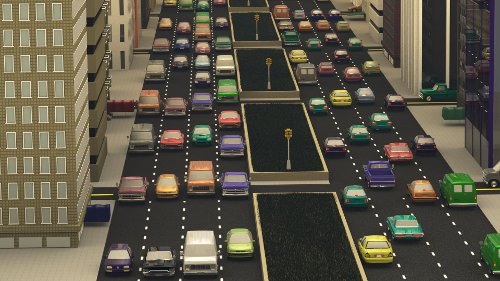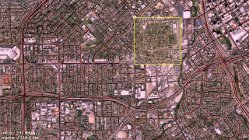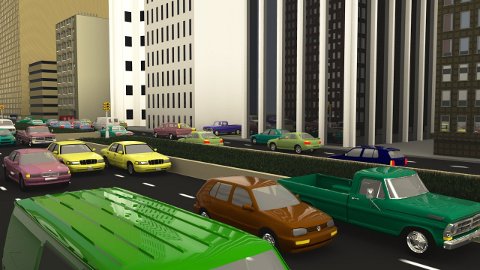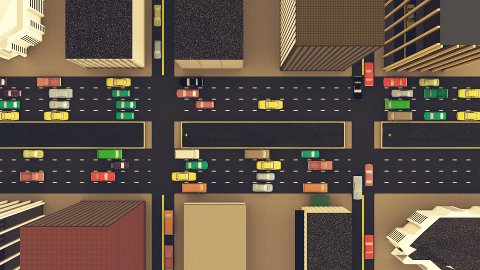Interactive Hybrid Simulation of Large-Scale Traffic
SIGGRAPH Asia 2011
Overview

We present a novel, real-time algorithm for modeling large-scale, realistic traffic using a hybrid model of both continuum and agent-based methods for traffic simulation. We simulate individual vehicles in regions of interest using state-of-the-art agent-based models of driver behavior, and use a faster continuum model of traffic flow in the remainder of the road network. Our key contributions are efficient techniques for the dynamic coupling of discrete vehicle simulation with the aggregated behavior of continuum techniques for traffic simulation. We demonstrate the flexibility and scalability of our interactive visual simulation technique on extensive road networks using both real-world traffic data and synthetic scenarios. These techniques demonstrate the applicability of hybrid techniques to the efficient simulation of large-scale flows with complex dynamics.
Paper
Preprint PDF (11-page article + 7 pages of appendices) (3.9MB)

BibTeX entry
@Article{sewall-hybrid11,
author = {Jason Sewall and David Wilkie and Ming C. Lin},
title = {Interactive Hybrid Simulation of Large-Scale Traffic},
journal = {ACM Transaction on Graphics (Proceedings of SIGGRAPH Asia)},
year = 2011,
volume = 30,
number = 6,
month = {December}}
Results
One of key objectives for this work is to facilitate the cooperative use of disparate simulation strategies — agent-based and continuum traffic simulation — in a traffic network for extensive metropolitan areas. There are numerous reasons that this is desirable: continuum techniques have performance advantages over agent-based simulations in many situations — their computational cost is proportional to size of the network, not to the traffic therein. Furthermore, the limited and regular memory access patterns of continuum algorithms are much more amenable to scalable parallelism than those found in agent-based algorithms. This plot shows the performance of single-thread agent-based, continuum simulation, and our hybrid technique where for a city road network with a variety of vehicle densities. Purely continuum simulation outperforms purely agent-based by 10–20x and our hybrid scheme (in this case, a constant portion the road network is simulated with agent-based, and the rest with continuum) is 9–17x faster than pure agent-based. These results were collected on an Intel© Core(TM) i7 980X processor running at 3.33GHz.





